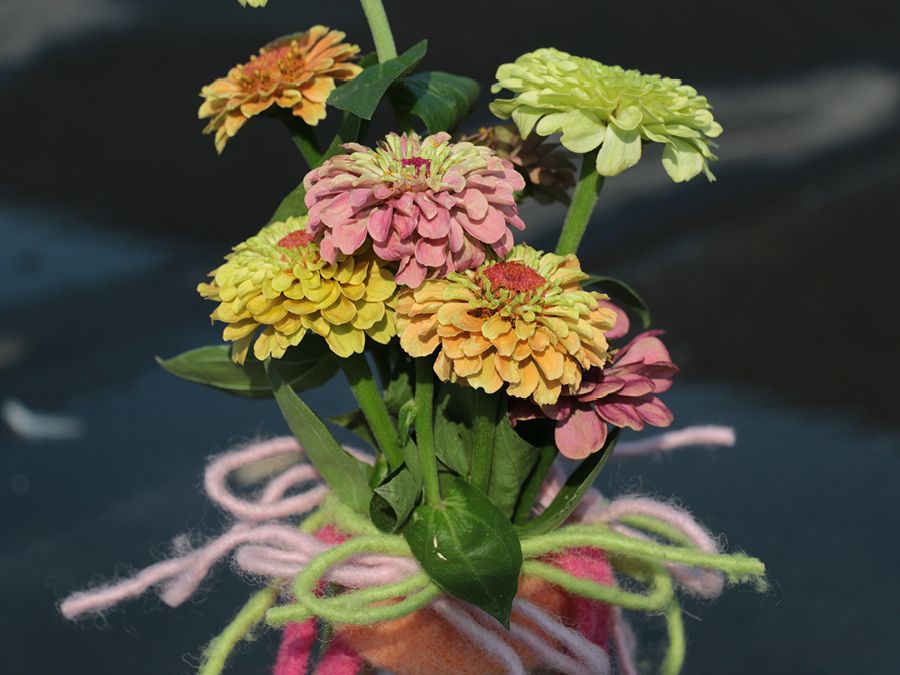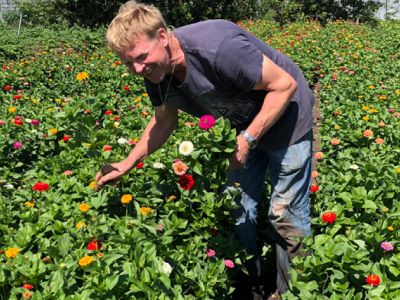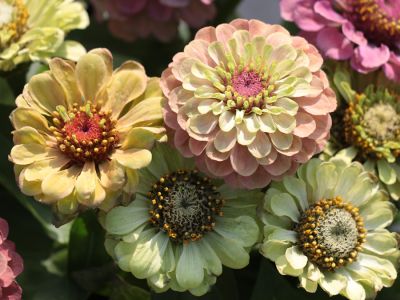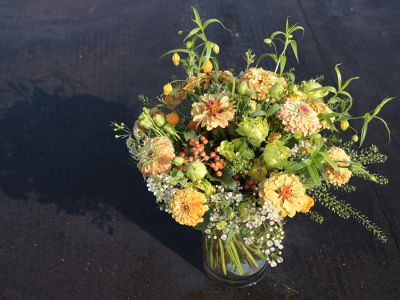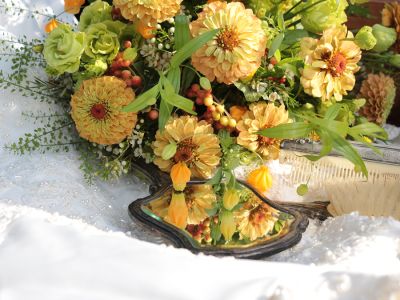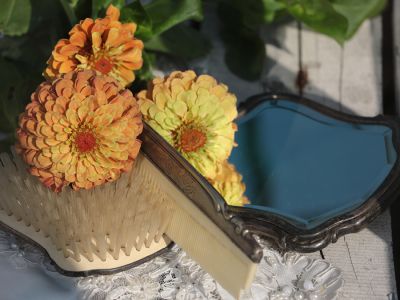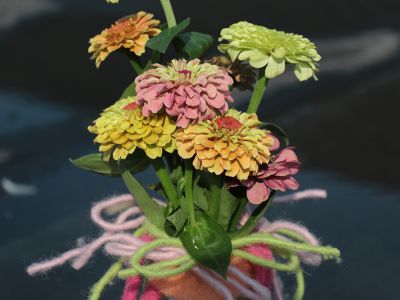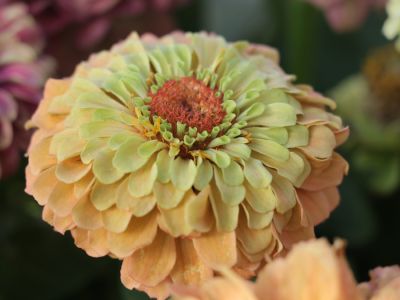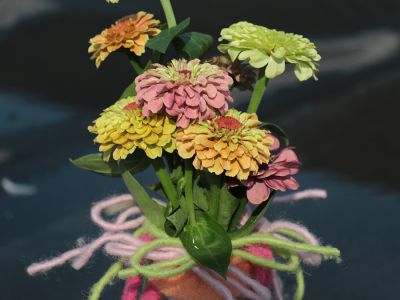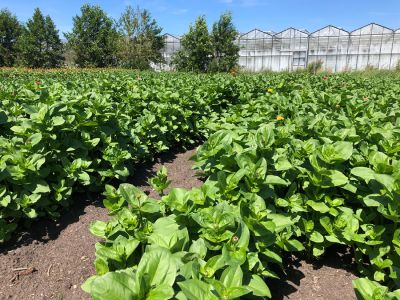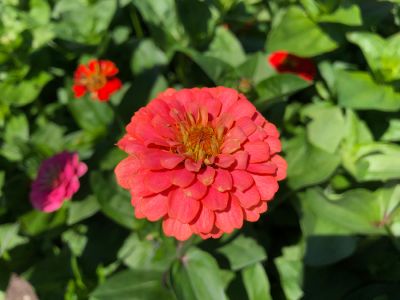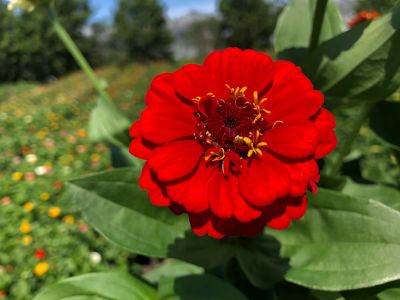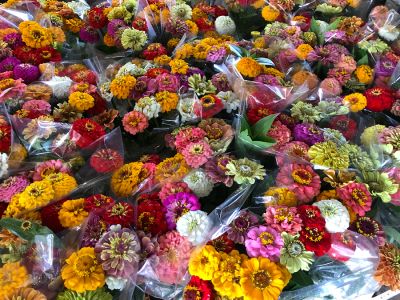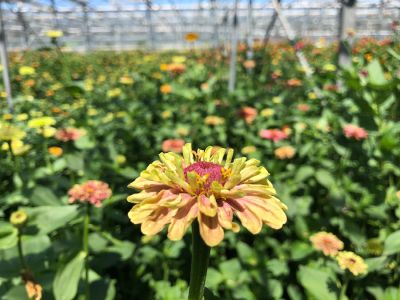Zinnia Lime Orange

Calendar
In the spotlights
Kees owns a nursery (C.N. van Beek) in a small town in the west of the Netherlands. Kees is a hard-working grower. Together with Joop, his only permanent employee, they produce and process the entire crop. All hours, love and passion go into the products. There is no time for social media or other forms of marketing, so there is little to be found on the internet about him. Kees does have beautiful seasonal products, which are definitely worth highlighting. Our FloraPodium team therefore set off full of enthusiasm to find out more about this passionate grower and his products.
Colorful gang
Even though Kees is extremely busy at the moment, he was happy to make time for us and took us on tour through his company. Arriving at a field full of blooming zinnias, we got the feeling that we were walking into a huge candy store. A huge mix of bright colors welcomed us and demanded our attention. It is no coincidence that zinnias are very popular with butterflies. In addition, these cheerful flowers have a lot of nectar and are therefore very attractive for bees.
The zinnia is related to the aster and belongs to the Asteraceae family. In contrast to the aster, the zinnia is annual and is sown every year. The plant is heat-loving, which means that she loves the sun. In the Netherlands, it also blooms during the hottest months of the year, from June to September. Thanks to the large taproot, the plant manages to extract water from the soil at a depth of 60 cm.
Kees only needs to give some water at the start of the germination period, after that the flower takes over and draws its water from the soil and Kees doesn't have to water them anymore. Dry summers are not necessarily guaranteed in the Netherlands. With a wet season, the plants get moldy faster. But because Kees also grows part of his cultivation in the greenhouse, he always has production.
Uniformity
Most growers always strive for perfect uniformity. All plants and seeds are selected, so that uniform lots are created. This is impossible with zinnias. Every flower is different. When Kees sows them, it is a surprise which varieties emerge. Double-flowered, single-flowered and all other surprises grow on the field. That makes the zinnia as a flower also very nice. No flower is the same. With the zinnia you clearly do not have to strive for perfection, at least not in the form of uniformity.
Lime colored
Among all those fantasticly brightly colored flowers we suddenly discover a bed with soft, lovely pastel-colored zinnias. The candy store for the slightly less sweet-toothed. Zinnia Lime Green, Lime Orange and Lime Red are the pastel-colored varieties. But no flower is the same in these varieties either. At first glance we think Lime Orange may be our favorite. This species is a descendant of the Lime Green and Lime Red and has only been in production at Kees’ nursery since this year. The Lime Orange variety came on the market last year. For those who want something different, this variety is strongly recommended! The leaves are lime green at the bottom, and color almost golden on top. The zinnias are the perfect flowers to create a true flower party on your table, in your bouquet or in a vase.
The cultivation
Kees was very young when he started getting involved in his father's company. After the horticultural school, he devoted himself entirely to the nursery. He is now the proud owner of the company. He actually runs the entire process on his own together with Joop. Only in the summer months he gets some reinforcement from his son Tim and niece Eline.
Outdoor cultivation
Everything is organized on two hectares of land outside and half a hectare of greenhouse. The zinnias themselves are grown both indoors and outdoors. Fortunately, the zinnia is generally a very easy crop. The very first shoots in June must be helped occasionally if some lice are spotted. There are still too few natural enemies to be found in the surrounding grass, but otherwise this beautiful product takes care of itself. Because Kees can grow in a responsible and sustainable way, he is MPS-A+ certified.
Small products
For Kees, the challenge lies in the cultivation of small products. He grows Veronicastrum, chrysanthemums, Zinnias, Anemone japonica, tulips, Ageratum and other small groups of products. And he grows them only in the seasons in which they also grow in nature. The small-scale cultivation of these products makes cultivation fun for him. His work is different every season. In addition, he would like to remain small-scale in order to be able to continue to serve his customers per bunch.
FloraPodium, 1 August 2019







